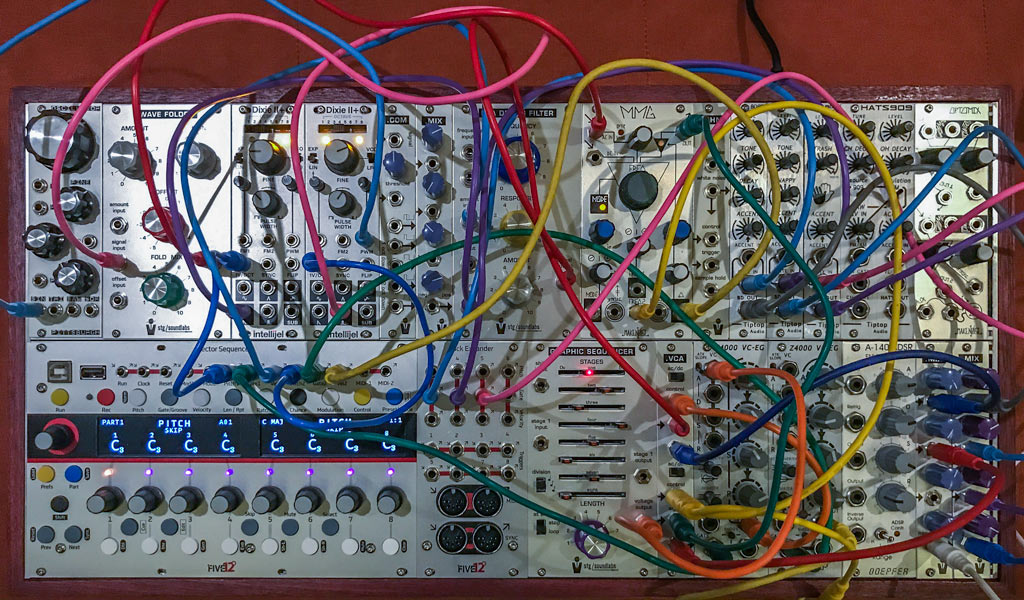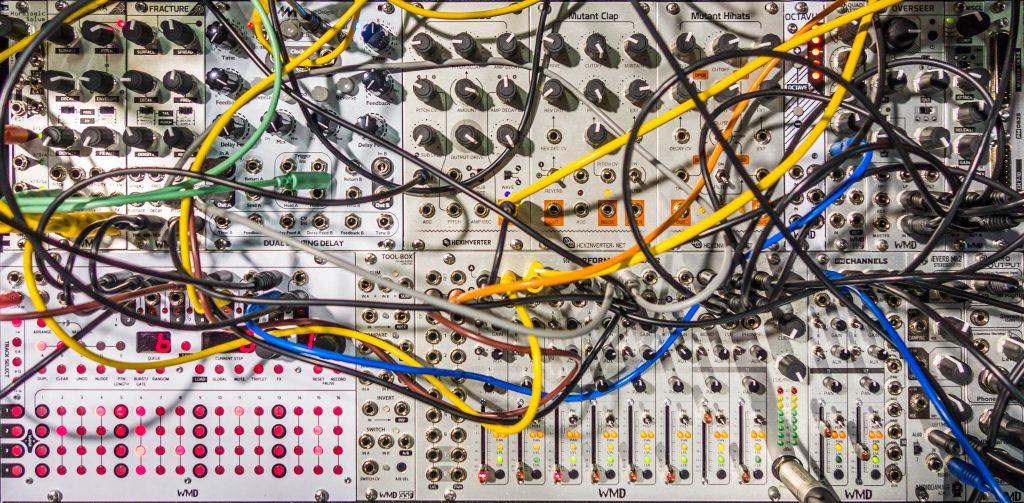We are getting close to the end of the companies I visited during this year’s NAMM show, and I’ve been saving some of my favorites for last. Today I talk more about oscillators, semi-modulars, sequencers, granular synthesis, and some modules we saw last year but which are getting much closer to their final release.
Steady State Fate

And that’s just one of the Zero Point Oscillator’s sound animation features: For example, you can choose two different waveshapes (including crossfading or “scanning” between adjacent waves), and then Morph between those. The pulse wave can also be set so different edges move when modulated, which creates a deeper phasing sound. Finally, there’s a nice selection of waveforms beyond the Morph waveshapes including one with only even harmonics, two different sub-octaves, and an alternate way of implementing sync. So in short, this oscillator can sound really animated all on its own.

Additional modules SSF showed included the 3hp Clone dual 1->4 buffered multiple ($79) which was designed to “accommodate 4 voice polyphonic modular systems” (a topic I discussed earlier), the DETECT-Rx envelope follower ($179) with independently-patchable voltage comparator and full wave rectifier, and Muton 8 channel VCA ($249) with channel mutes and a summing mixer.
Five12
Five12 – creators of the much-loved Numerology software sequencer – has been on a mission to create a Eurorack sequencer that “includes many of the goodies from Numerology in a tangible, touchable physical format.” The result is the Vector Sequencer (tentatively $699), which supports both CV/Gate and MIDI – including its own USB ports – making it a potential hub for a mixed modular + keyboard synth setup. At its heart it’s a step sequencer, with each of its eight independent “Parts” being up to 16 steps long (to be expanded later to 64). Each part has one main sequence for notes, velocity, and the such, as well as two eight-step “sub-sequences” to generate modulation or other signals.
There are multiple output options available, and each output can be assigned to its own Part. The base unit comes with two CV/Gate/Velocity outputs as well as 2 MIDI ports; an optional expander adds four more CG/Gate/Velocity sets, eight bi-directional triggers, and another MIDI port in addition to DIN Sync. Each step features a clear note display, velocity (or general modulation) level, note length including rests and ties, ratcheting, and a “Chance” section where you can set the probability of actions such as mute, skip, accent, jumping forward or backwards, ratcheting, repeats, pitch shifting, and more. Parts can be loaded from 20 Preset locations (with plans to expand that to 40).
I’ve been using a pre-production unit, and I’ve been very pleased with the Vector Sequencer. I still have a two-row, one-pair-of-knobs-per-step Doepfer A-155 analog sequencer (plus a Make Noise René) in my system because I love the immediacy of programming my voltages interactively on the fly, and I dislike menu diving on a typical digital sequencer to access the parameter I want. The Vector Sequencer’s two OLED displays, nine encoder knobs – one per step (in banks of 8) plus one master that can change all steps at once – and numerous function buttons has proven to be as friendly to use as my old A-155, with a lot more options. Five12’s Jim Coker has also been very open and accessible during the beta testing process, tweaking behaviors and parameter ranges based on tester feedback. The code is still being finalized, but I can already see this is going to be one of my “desert island” modules.
WMD
WMD demonstrated another one of my favorite modules of the show: the Fracture Multi-Particle Crowd Percussion Synthesizer ($269). This is one of the most useful applications I’ve seen of granular synthesis – another theme of this year’s show (which I’ll continue tomorrow with Mordax’s GXN).
Fracture starts with a number of resonant-yet-damped samples, ranging from handclaps to chop sticks to ping pong balls to opening a beer can. Fracture operates in a way similar to WMD’s already-released Chimera metallic-sound percussion module: The sample is selected with the Surface control, and how many of its neighbors you drag into the party is set by Spread. You then set Frequency, Density, Reverb, Decay, Punch, and Tail parameters to decide how these randomized sample snippets are spread out in pitch and time, in addition to setting other overall tonal controls. The result is one of the most sonically fresh (and useful!) percussion modules I’ve heard.
WMD also showed a further evolution of the Advanced Trigger Sequencer they previewed last year. Like the Vector Sequencer, this module is very “immediate” to use with numerous dedicated lit buttons to illustrate and create trigger-based patterns.
Warm Star

Warm Star is also working on an AMA – Adder, Mult, and Amplifier – module ($100; the prototype at the show was called Mix & Mult). Think of it as a precision adder married to a buffered multiple (like the Frap Tools 333), with some stages providing amplification as well. It has no knobs or switches; just jacks – so you select the behavior you want with the way you patch it.
Tomorrow is the last installment of this year’s NAMM reports, with a look at Delptronics, Eowave, Mordax, and my favorite module from the show, the Strymon Magneto.



